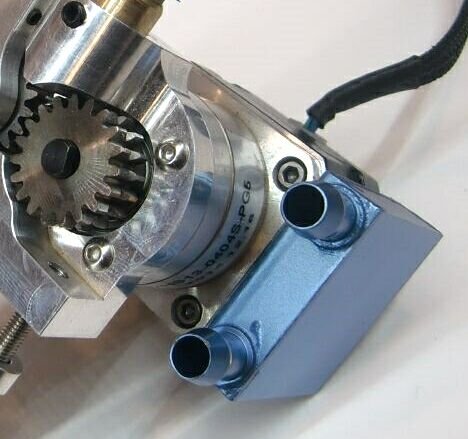Hi ! This post will be a few requirements needed to be able to print some high temperature plastics:
- PEI
- PEEK
- PPSU
- Carbon loaded PEI/PEEK
Few people managed to modify some Desktop printers with more or less success to print high temperature plastics.
Follows a few links:
- Ultimaker 2 modified to print PEEK: https://community.ultimaker.com/topic/11580-printing-peek-with-um2-getting-to-330-degrees-celsius-then/
- Lulzbot modified to print PEI: https://ntrs.nasa.gov/archive/nasa/casi.ntrs.nasa.gov/20170000214.pdf
- https://www.3d4makers.com/blogs/news/turning-a-desktop-3d-printer-into-a-high-temperature-printer
- https://www.researchgate.net/publication/283270065_Extrusion-based_additive_manufacturing_of_PEEK_for_biomedical_applications
Common set of modifications:
- Full Metal HotEnd: reach 450/460C
- thermal insulation using ceramic fibre or other kind of high temperature refractory fabric.
- upgraded heat resistance.
- PT100 or K Thermocouple, some people had failures with some PT100 probes.
- Heatbed modification to reach at least 150/170C + Insulation.
- Creation of an insulated Chamber, move out the electronic and cooling of stepper motors.
- Add Thermal Heating with lamps, a heater to ensure 3D printed parts are kept heated during printing.
Hot End
Most of industrial 3D printers tailored for PEEK printing are using water cooled hotends. It is not a big deal, the PC industry has a wide variety of radiator and pumps that are available for a fair price. There is still the issue to obtain a water cooled hotend. Even if the E3D is well designed, it has not been built to run at least 80C ambient temperature and a continuous 460C . Also this temperature can cause issues on the Aluminium heater block, they have developed a Copper Nickel Plated heater block to cope with this.
From a cost perspective, there is a very wide offer on 40W to 100W industrial heat resistors, also PT100 and K Thermocouple are quiet cheap and able to cope with such temperature.
A short video of such water cooled hotend on an industrial printer:
Heatbed
In order to be able to reach nearly 170C/200C on a 200mm square you need around 500W. Hopefully, those powerful heatbeds start to be available at a fair price: it does not cost a lot more to build a 500W than a 200W. For such kind of power, you start to use the main power through a SSR.
Insulated and Heated Chamber
This is the place where there is most of the work, a good insulation is really important.
They are different range of temperature for heated chambers in the range: 60/80C, 80C/100C and after up to 200C.
There is still a patent on 3D Printers designed to have also the motion components outside of the chamber.
Patent from Stratasys: https://patents.google.com/patent/US6722872.
Both air cooling and water cooling are used for stepper motors in industrial printers, using also temperature resistant components (due to this patent issue).
Example of such water cooler on a stepper motor

Using small bulbs to heat the part is a cheap and good idea that was used by the NASA for instance to print PEI.
It is also possible to buy a small heater and control it with a small PID controller.
Few links of interesting industrial printers able to cope with such needs :
- http://www.spiderbot.eu/en/products/absolute-2.html
- http://www.spiderbot.eu/en/products/absolute3-preview.html
- http://www.i3dinno.com/multi512x-p213248.html
- https://tractus3d.com/t650p-peek-3d-printer/
However, I think the previous cited patent is very blocking to be able to reduce the price of such printers. Of course, the cost and complexity of the chamber is also important, but less than all the constraints induced by this patent. It will expire relatively soon allowing to simplify and to reduce the cost of such kind of printers.
Release the Kraken! You got a 5.43% upvote from @seakraken courtesy of @boucaron!
Downvoting a post can decrease pending rewards and make it less visible. Common reasons:
Submit
You just received a 46.87% upvote from @honestbot, courtesy of @boucaron!

Downvoting a post can decrease pending rewards and make it less visible. Common reasons:
Submit
Congratulations! This post has been upvoted by SteemMakers. We are a community based project that aims to support makers and DIYers on the blockchain in every way possible. Find out more about us on our website: www.steemmakers.com.
If you like our work, please consider upvoting this comment to support the growth of our community. Thank you.
Downvoting a post can decrease pending rewards and make it less visible. Common reasons:
Submit